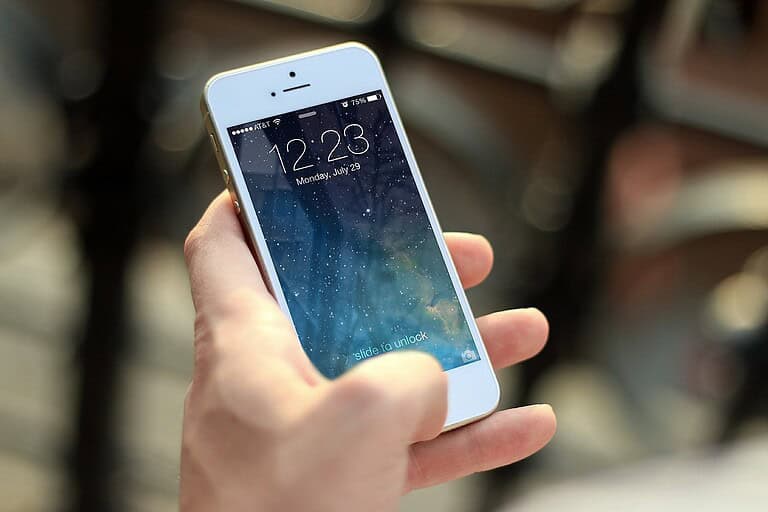Mobile devices have never been a more integral part of our daily lives, and because of that, they should also be an essential part of your overall marketing strategy and how you can reach existing and potential customers.
By the end of 2017, it’s predicted that 75% of online content consumption will be through mobile devices. But what trends can we expect for mobile marketing in the future, and what does 2017, 2018 and beyond have in store?

Location-Based Services for Retail
Beacons and location-based technologies will begin to make more of an impact on the high street.
In-store technology such as beacons, which allows customers to track locations and receive notifications when walking past specific areas in the store, can enhance the shopping experience, and alter shopping habits that have remained unchanged for years.
Augmented Reality
While there are a number of apps and games that make use of augmented reality, AR is sure to have a big impact for mobile marketing and online ecommerce.
Snapchat has already proved that brands can capture the hearts and minds of the consumer, through branded AR content.
Shopper Marketing
The DMA found that around 80% of millennials use their smartphones while in-store, which allows mobile marketing to have a huge role in creating opportunities to target consumers and impact the offline sales while they are in your store.
You could provide coupons, promotions, receipt processing and much more.
Ecommerce and In-Store Experiences Blur
Customers expect access to knowledgeable sales teams in order to help inform their purchases, but will still look to research product information and prices online, even within the store itself.
Peer reviews, offers, stock availability nearby are all essential parts of what people look for on mobile devices.
The physical and digital realms come together nicely, but in order to achieve this you need to ensure your customers receive a great experience, whether online, in your store, or somewhere in-between.
Creating positive brand experiences wherever the customer wishes to be is important in creating loyal customers, as they will expect flexibility with wider purchase boundaries.
Drive Foot Traffic
If you have a physical store, then mobile marketing can play a big role in boosting your foot traffic.
While many retail brands change processes and organisational strategies in order to keep up with ecommerce, and big names such as Amazon who simply changed the game for some industries, it’s important to make sure you are reaching potential customers on mobiles who could still be interested in coming to your store.
Amazon and other ecommerce retailers are looking to drive consumers online with a decrease in foot traffic, but if you’re ahead of the game you can ensure you use the online strategy to drive your offline activities.
Big Data
As more software and data is available, it makes it easier for marketers to track customers, and ensure the best possible conversion rates.
It’s important to maintain a unified view of customers and their online activities where possible. Tracking actions across online and offline channels is a huge advancement in marketing technology that can help you see the full, broader picture of consumer behaviour across multiple devices. This can make a big difference in enhancing your overall marketing strategy, as well as your mobile-specific marketing campaigns.
Messaging
While social media is a juggernaut of how we now interact with each other and brands on a daily basis, messaging app usage has grown dramatically in the past few years.
Now that messaging apps have become such a fundamental part of how people interact with each other, each platform is slowly evolving into allowing more marketing and ecommerce functionalities. WeChat is one example, which allows businesses to create an ecosystem within a messaging app, with other platforms looking into how they can develop this.
Facebook is also growing into offering more complete and feature-rich business pages, and Messenger is a big part of that. You will already see some businesses with a “very responsive” tag, which means they will respond and deal with customer queries through Facebook Messenger. This can be a big part of your mobile marketing strategy, if you can find good uses for this, such as customer care and so on.
Always-On Lifestyle
The fact shoppers are now living an always-online lifestyle, means that brands need to make the most of this.
You should focus your marketing efforts around ensuring you can reach potential customers whenever, and wherever you can.
Mobile marketing means you can get them at home, travelling, in town, or while they are out doing other activities.
Whether they are actively searching for your brand, similar products or services to you, or browsing elsewhere online, you should ensure you’ve covered these bases.
Reinforcing your brand through online ads, on social media or Google itself, and otherwise optimising your website and listings for when people are searching for you is essential to getting more business from customers on mobile devices.
Mobile Video Ads
Mobile video ad-spend is set to exceed around $6 billion once 2018 comes around, and is a great place to find new customers.
More people are watching videos online, with increased data caps, better quality mobile screens, and better quality and accessible online videos leading to video consumption on-the-go and at home.
Facebook boasts 500 million people watching videos on the platform every single day, and this gives marketers a chance to present branded content in front of the eyes of potential customers.
This is a big opportunity for marketers to capture media allocations, as consumer activities and locations have changed so dramatically in the past few years.












